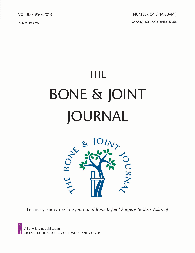
PEDIATRIC ORTHOPAEDICS
Synthetic casts provide better clinical outcomes in children with forearm fractures
Bone Joint J. 2013 Sep;95-B(9):1285-9One hundred and ninety-nine children, under 18 years of age, with a displaced forearm fracture of the radius, ulna, or both, who required closed reduction and immobilization were randomly assigned into 1 of 2 postoperative treatment groups to receive either a plaster of Paris or synthetic cast to test the efficacy and safety of each treatment. Results indicated that patients who received synthetic casts were less likely to experience complications following cast application. Patients in the synthetic group were also found to have significantly higher overall satisfaction following treatment when compared to those who received the plaster of Paris mold.
Unlock the full ACE Report
You have access to {0} free articles per month.Click below to unlock and view this {1}
Unlock NowCritical appraisals of the latest, high-impact randomized controlled trials and systematic reviews in orthopaedics
Access to OrthoEvidence podcast content, including collaborations with the Journal of Bone and Joint Surgery, interviews with internationally recognized surgeons, and roundtable discussions on orthopaedic news and topics
Subscription to The Pulse, a twice-weekly evidence-based newsletter designed to help you make better clinical decisions
Exclusive access to original content articles, including in-house systematic reviews, and articles on health research methods and hot orthopaedic topics
Or upgrade today and gain access to all OrthoEvidence content for just $1.99 per week.
Already have an account? Log in


Subscribe to "The Pulse"
Evidence-Based Orthopaedics direct to your inbox.
{0} of {1} free articles
Become an OrthoEvidence Premium Member. Expand your perspective with high-quality evidence.
Upgrade Now












































































